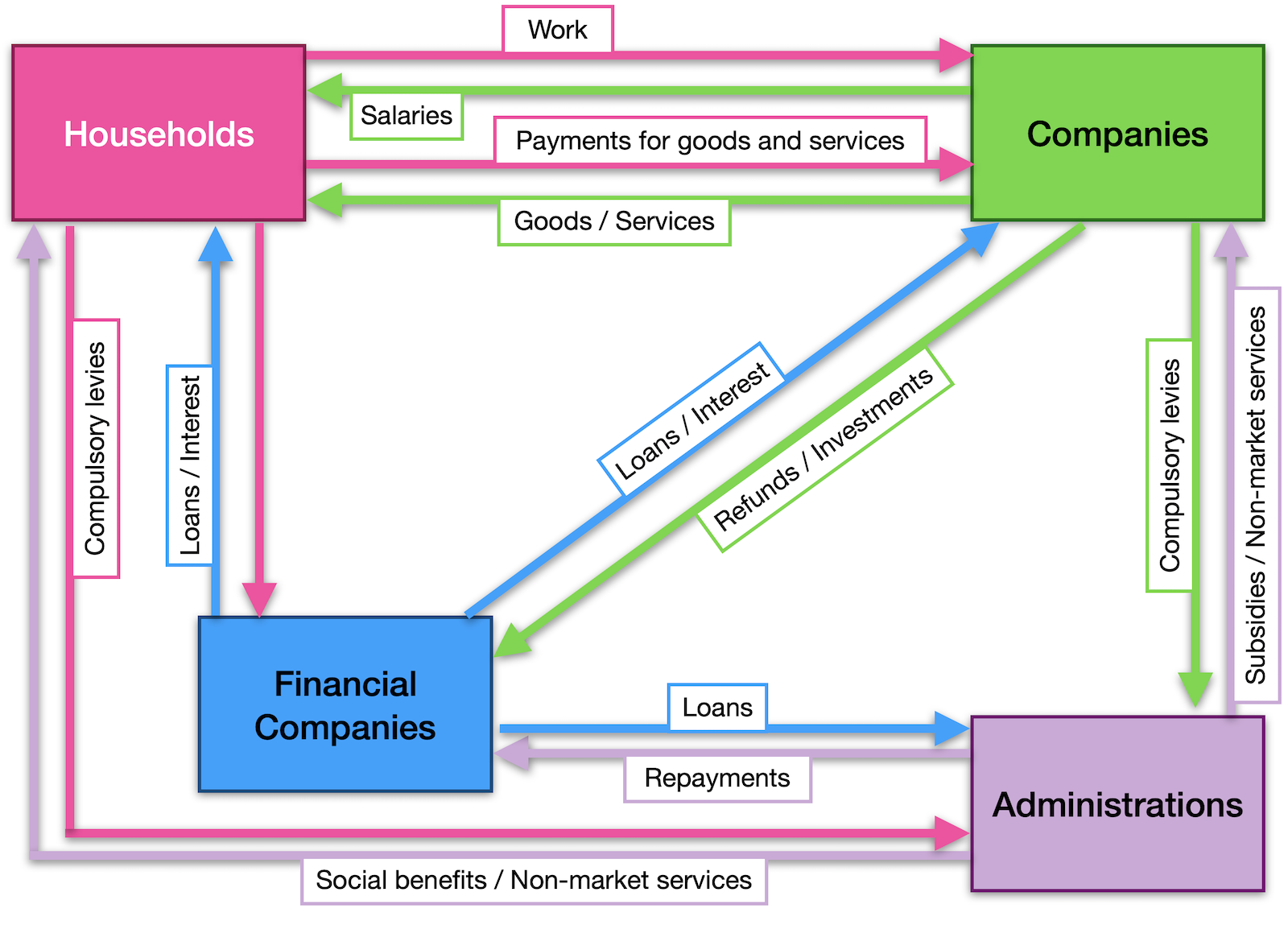Objectifs globaux : Identify the need for data and models to understand the economic and social reality.
Objectifs travaillés : Simple market terms, analyzing the economic circuit.
Resources :
PDF: The model, a simplified representation.
PDF: The economic circuit.
PDF: Household confidence in the market.
PDF: Inflation: The model.
PDF: Evaluation, Session 3
Contents
Activité 1
What is the difference between a reduced model and a theoretical model?
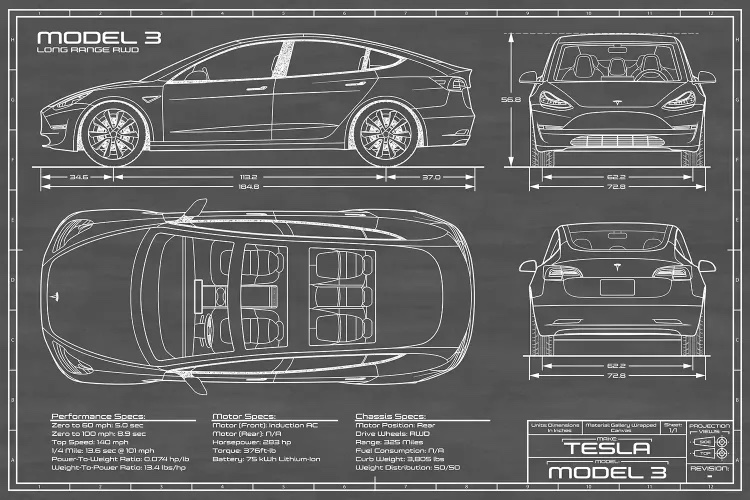
An example of a reduced model
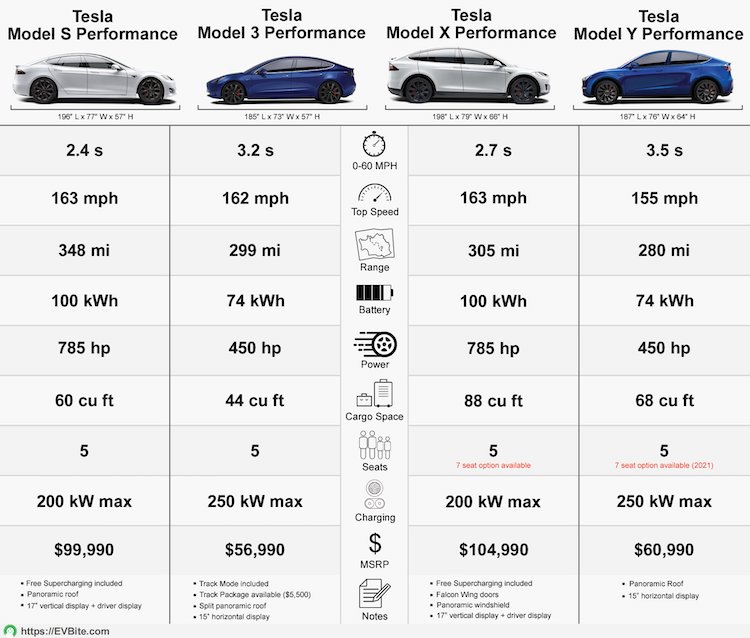
An example of a theoretical model
PDF: The model, a simplified representation.
Read the text and answer the questions:
The reduced model and the theoretical model seek to account for reality in a more reduced and / or simplified form.
The reduced model seeks to reproduce reality by physical materials, respecting the proportions and details of the model to be represented, while the theoretical model seeks to describe / explain reality by an intellectual representation either by schematization (plan, drawing ) or by constructing logical relationships between variables to illustrate or understand the real world.
Activité 2
The economic circuit: a simplified representation of the economy.
Copy the information and the graph.
The economic circuit highlights the relationships at the level of the entirety of society, the interdependencies of agents (in the graph below limited to households and companies) and the operations that link them (production, consumption, etc.) .
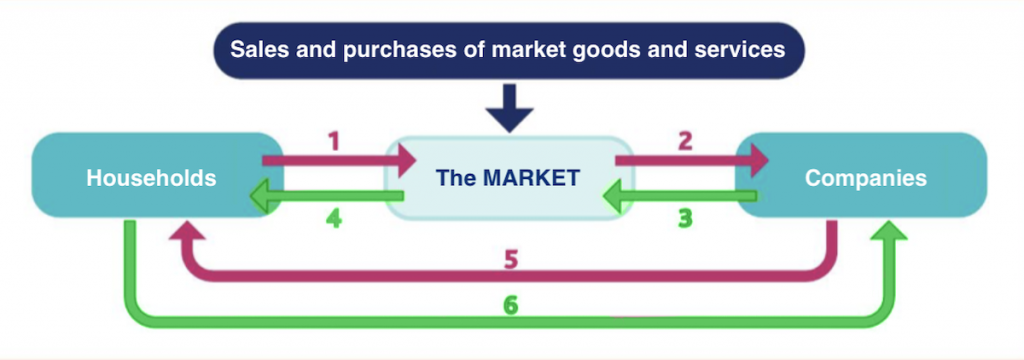
1. Search the internet for definitions of “households”, “businesses” and “market goods and services”, then illustrate them with examples.
In economics, a household is a person or a group of people living in the same residence. Most economic models do not address whether the members of a household are a family in the traditional sense. In reality, there is not always a one-to-one relationship between households and families.
ex: a single man in a flat, a family of five, three roommates.
A business is defined as an organization or enterprising entity engaged in commercial, industrial, or professional activities.
ex: a bakery, Renault, a hairdressers
Market goods and services are generally intended to be sold on the market at a price calculated to cover their production cost. Market goods and services are all goods and services produced by market activity branches, all imported goods and services with the exception of those that are directly purchased externally by the government in the framework of its routine operations and by households, and the production part of non-market branches of government and private non-profit institutions serving households.
ex: a baguette, a car, a haircut
2. Complete the diagram by associating each number with one of the following elements:
3. What colour are the arrows that correspond to the cash flows? to real (physical) flows?
Cash flows: Red
Physical flows: Green
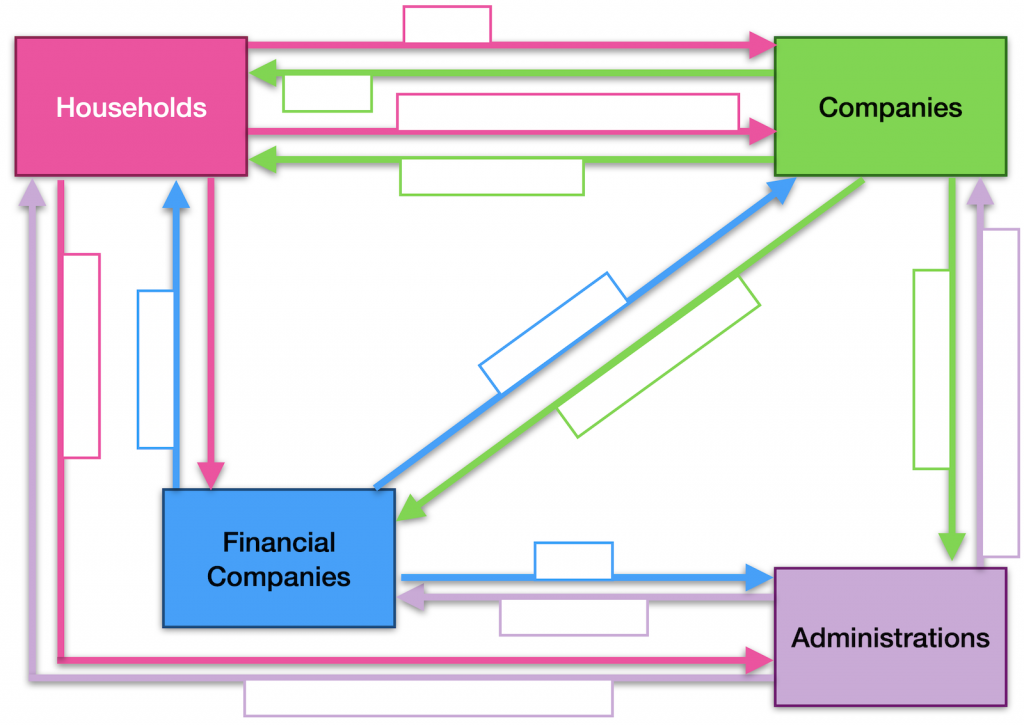
PDF: The economic circuit.
4. Complete the schema with the following exchanges:
A: Repayments
B: Goods / Services
C: Subsidies / Non-market services
D: Loans / Interest (x2)
E: Salaries
F: Compulsory levies (x2)
G: Social benefits / Non-market services
H: Payments for goods and services
I: Loans
J: Refunds / Investments
K: Work
Activité 3
Measuring to predict
Look at the graph and answer the questions.
PDF: Household confidence in the market.
Synthetic confidence indicator of households.
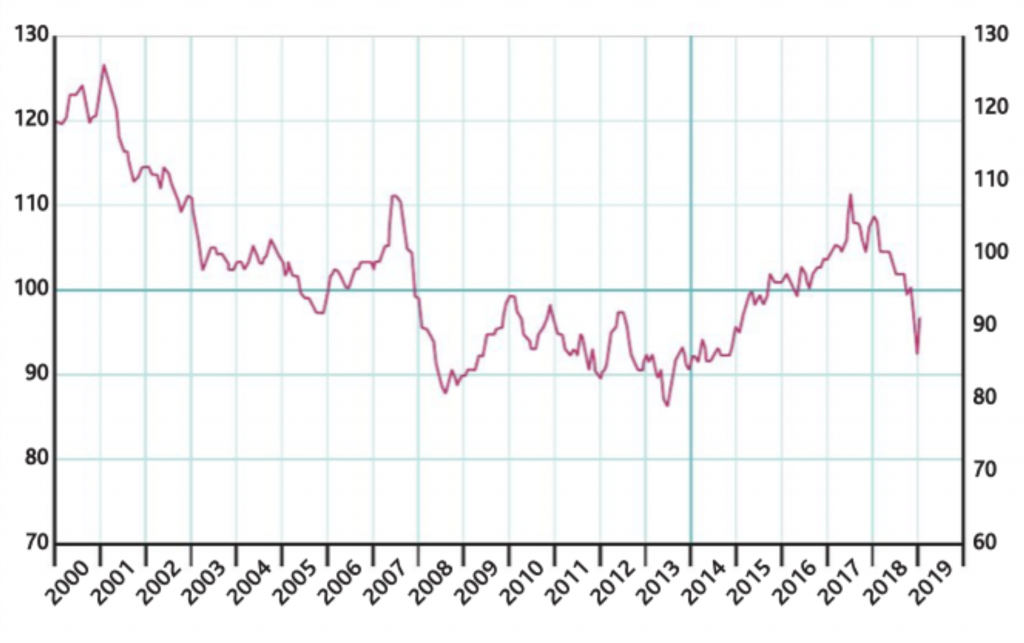
A period when household confidence has decreased, there are several possibilities: from 2001 to 2003 for example.
A period when household confidence has increased: from 2013 to 2017 for example.
Increased confidence of households can be favorable to consumption: we do more purchase projects (including automobile or real estate) when you trust in the future. And we save less money if we do not fear the future.
It can be assumed that the opinion of households on their economic environment and/or their personal economic situation will impact their decision to consume or to save. To know this level of confidence can make it possible to predict a possible variation in economic activity.
Activité 4
Using a model to describe inflation
Read the text and answer the questions.
The three steps necessary for the study of inflation are:
1: defining the phenomenon,
2: measuring the phenomenon,
3: researching the explanatory elements.
The explained variable is inflation and explanatory variables:
– the imbalance of supply/demand (a decrease in supply facing an unchanged demand will increase prices)
– rising production costs (an increase in oil prices, for example, will affect all prices)
– Income inequalities (income inequality will create social struggles which will cause a price reaction)
– currency value (too fast of an increase in monetary mass causes a decrease in relative value)
Evaluation
Answer questions about this lesson.
How do economists, sociologists and political scientists reason and work? – Séance 3
Quiz Summary
0 of 15 questions completed
Questions:
- 1
- 2
- 3
- 4
- 5
- 6
- 7
- 8
- 9
- 10
- 11
- 12
- 13
- 14
- 15
Information
You have already completed the quiz before. Hence you can not start it again.
Quiz is loading...
You must sign in or sign up to start the quiz.
Vous devez d’abord complété le suivant :
Résultats
Résultats
0 of 15 questions answered correctly
Your time:
Temps écoulé
You have reached 0 of 0 point(s), (0)
Earned Point(s): 0 of 0, (0)
0 Essay(s) Pending (Possible Point(s): 0)
| Score moyen |
|
| Votre score |
|
Catégories
- Pas classé 0%
-
Zut !
On dirait que vous devez vous entraîner un peu plus. Pourquoi ne pas revenir à la leçon et, quand vous êtes prêt, recommencer le quiz ?
-
Dommage !
Vous n’étiez pas loin de réussir ce quiz. Vous pouvez recommencer le quiz ou d’abord voir où vous vous êtes trompé.
-
Bien joué !
Vous n’étiez pas loin d’obtenir 100% ! Vous pouvez essayer à nouveau le quiz pour obtenir un score parfait, ou passer à la section suivante.
-
Félicitations !
Vous avez eu 100% sur ce quiz !
| Position. | Nom | Passé le | Points | Résultat |
|---|---|---|---|---|
| Chargement du tableau | ||||
| Aucune donnée disponible | ||||
- 1
- 2
- 3
- 4
- 5
- 6
- 7
- 8
- 9
- 10
- 11
- 12
- 13
- 14
- 15
- Répondu
- Révision
-
Question 1 de 15
1. Question
What is a household?
ExactInexact -
Question 2 de 15
2. Question
What is a business?
ExactInexact -
Question 3 de 15
3. Question
What are market goods and services?
ExactInexact -
Question 4 de 15
4. Question
Place the economic circuit transaction: Refund
ExactInexact -
Question 5 de 15
5. Question
Place the economic circuit transaction: Compulsory levies
ExactInexact -
Question 6 de 15
6. Question
Place the economic circuit transaction: Work
ExactInexact -
Question 7 de 15
7. Question
Place the economic circuit transaction: Loans
ExactInexact -
Question 8 de 15
8. Question
Place the economic circuit transaction: Salaries
ExactInexact -
Question 9 de 15
9. Question
Place the economic circuit transaction: Social benefits
ExactInexact -
Question 10 de 15
10. Question
Place the economic circuit transaction: Subsidies
ExactInexact -
Question 11 de 15
11. Question
Place the economic circuit transaction: Goods/Services
ExactInexact -
Question 12 de 15
12. Question
Place the economic circuit transaction: Payment for goods/services
ExactInexact -
Question 13 de 15
13. Question
Why would measuring household confidence in the market be interesting for an economist?
ExactInexact -
Question 14 de 15
14. Question
Which is NOT a step necessary for the study of inflation?
ExactInexact -
Question 15 de 15
15. Question
Which is NOT a variable studied in the Inflation Model?
ExactInexact
